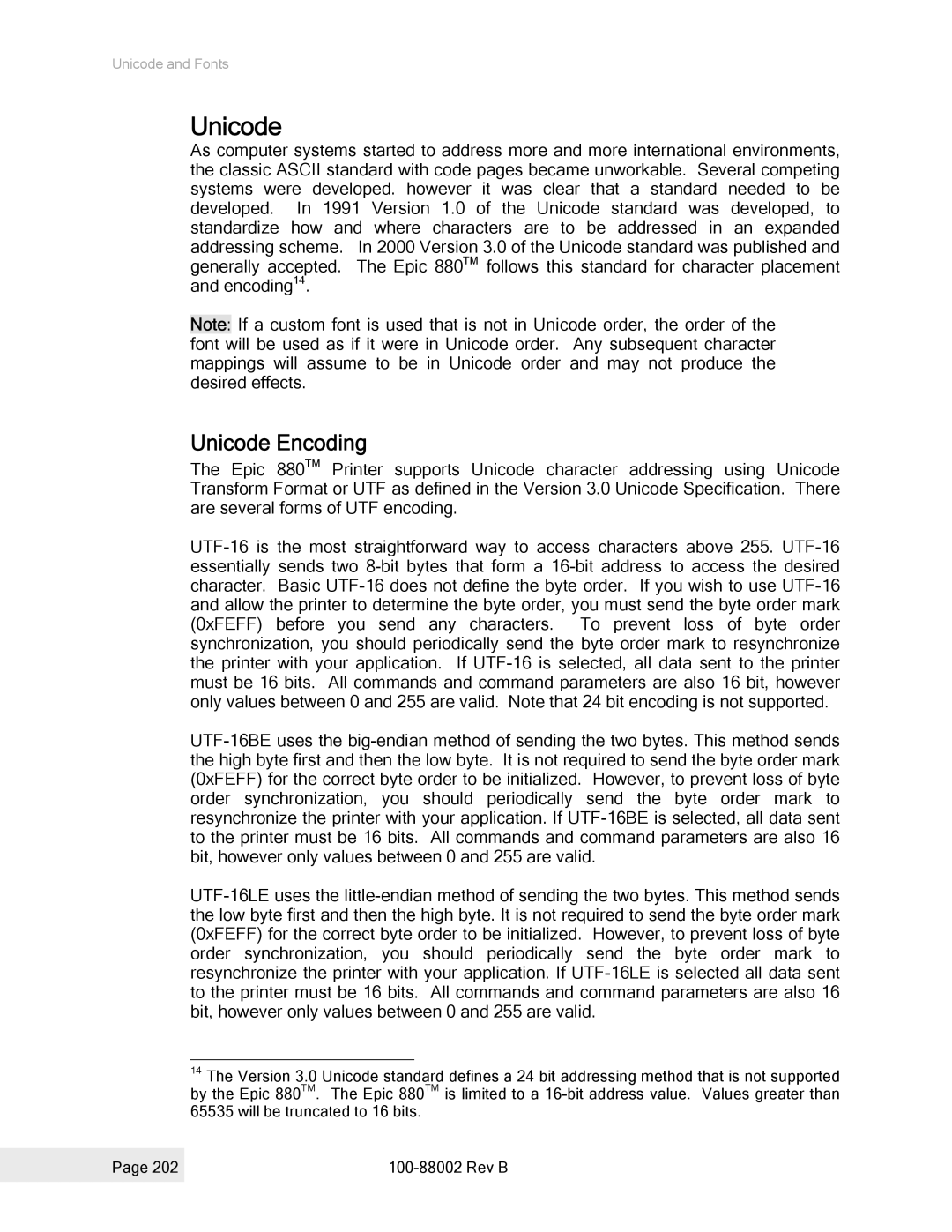Unicode and Fonts
Unicode
As computer systems started to address more and more international environments, the classic ASCII standard with code pages became unworkable. Several competing systems were developed. however it was clear that a standard needed to be developed. In 1991 Version 1.0 of the Unicode standard was developed, to standardize how and where characters are to be addressed in an expanded addressing scheme. In 2000 Version 3.0 of the Unicode standard was published and generally accepted. The Epic 880TM follows this standard for character placement and encoding14.
Note: If a custom font is used that is not in Unicode order, the order of the font will be used as if it were in Unicode order. Any subsequent character mappings will assume to be in Unicode order and may not produce the desired effects.
Unicode Encoding
The Epic 880TM Printer supports Unicode character addressing using Unicode Transform Format or UTF as defined in the Version 3.0 Unicode Specification. There are several forms of UTF encoding.
14The Version 3.0 Unicode standard defines a 24 bit addressing method that is not supported by the Epic 880TM. The Epic 880TM is limited to a
Page 202 |
|
|
|
